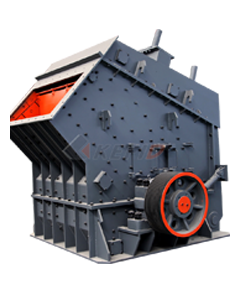The toggle joint mechanism is a crucial component in limestone crushing machines, particularly in jaw crushers. It provides the necessary mechanical advantage to amplify the force applied to break large limestone rocks into smaller, manageable sizes.
 How Toggle Joint Mechanism Works in Limestone Crushing Machines:
How Toggle Joint Mechanism Works in Limestone Crushing Machines:
1. Basic Principle:
– The toggle joint consists of two plates (toggle plates) connected to the moving jaw and the fixed frame.
– When the eccentric shaft rotates, it moves the pitman (connecting rod), which exerts force on the toggle plates.
– The toggle plates act as a lever system, converting a small input force into a much larger crushing force.
2. Components Involved:
– Fixed Jaw Plate: Stationary part where limestone is crushed.
– Moving Jaw Plate: Moves back and forth due to the toggle mechanism.
– Toggle Plates: Transmit and amplify force from the pitman to the moving jaw.
– Eccentric Shaft: Rotates to create reciprocating motion.
– Spring Return Mechanism: Helps reset the toggle position after each stroke.
3. Crushing Action:
– As the moving jaw moves towards the fixed jaw, limestone rocks are compressed and fractured.
– The toggle joint ensures that even a small movement of the eccentric shaft results in significant pressure at the crushing point.
4. Advantages in Limestone Crushing:
– High mechanical advantage (force multiplication).
– Efficient energy transfer for breaking hard limestone.
– Adjustable discharge size by changing toggle plate settings.
– Robust design for handling abrasive materials like limestone.
5. Types of Toggle Mechanisms:
– Single Toggle Jaw Crusher: Simpler design with one toggle plate; lower cost but higher wear on jaw plates.
– Double Toggle Jaw Crusher: Uses two toggle plates for better force distribution; more durable but complex.
Applications in Limestone Processing:
– Primary crushing in quarries and mining operations.
– Secondary crushing for finer aggregates..jpg) Recycling and demolition applications where limestone debris must be reduced.
Recycling and demolition applications where limestone debris must be reduced.
Maintenance Considerations:
– Regular inspection of toggle plates for wear or cracks.
– Lubrication of pivot points to reduce friction.
– Monitoring jaw plate wear to ensure optimal crushing efficiency.
Conclusion:
The toggle joint mechanism is fundamental in limestone crushing machines, providing reliability and efficiency in breaking down tough rock materials. Whether in single or double-toggle





Leave a Reply